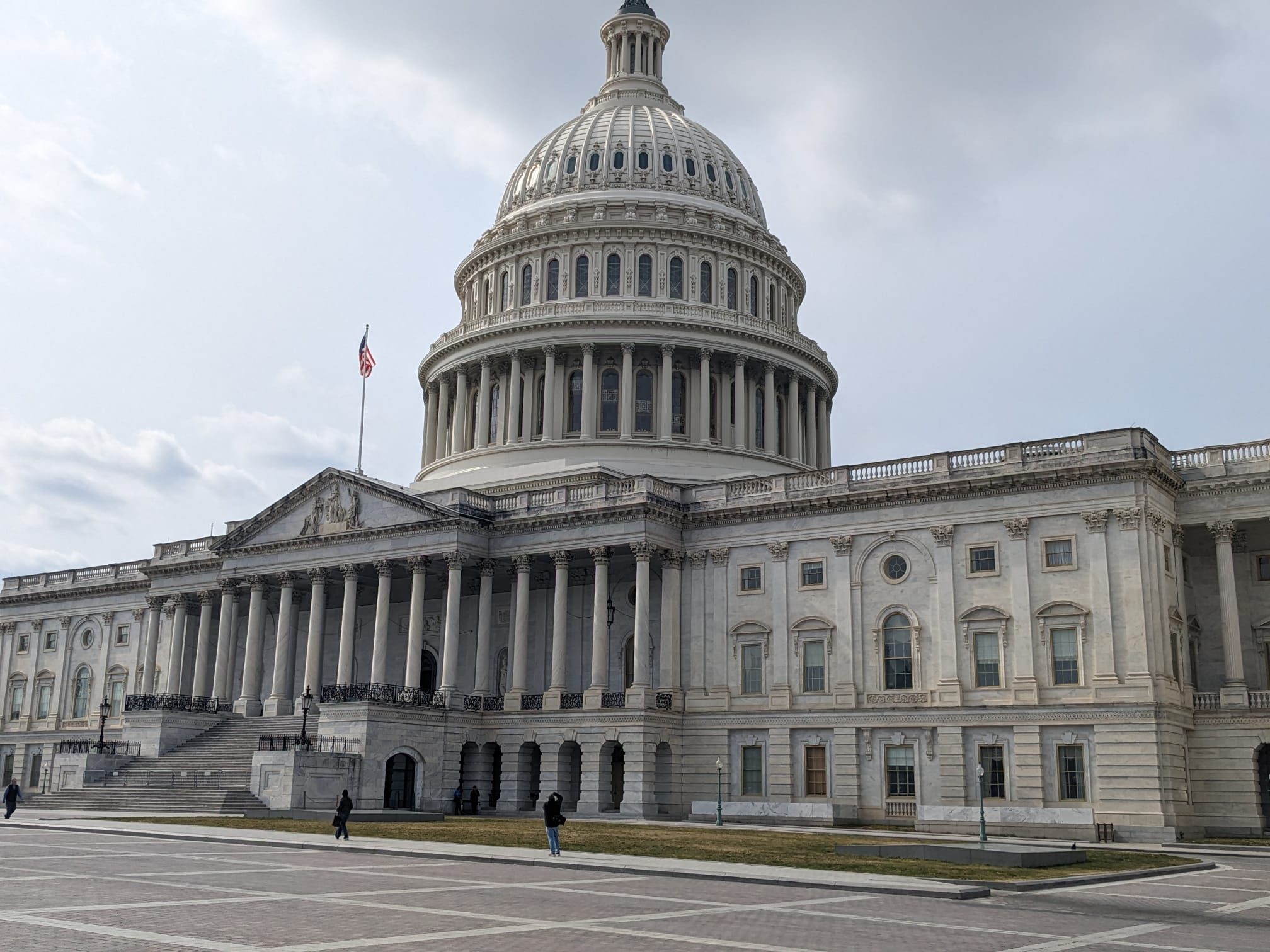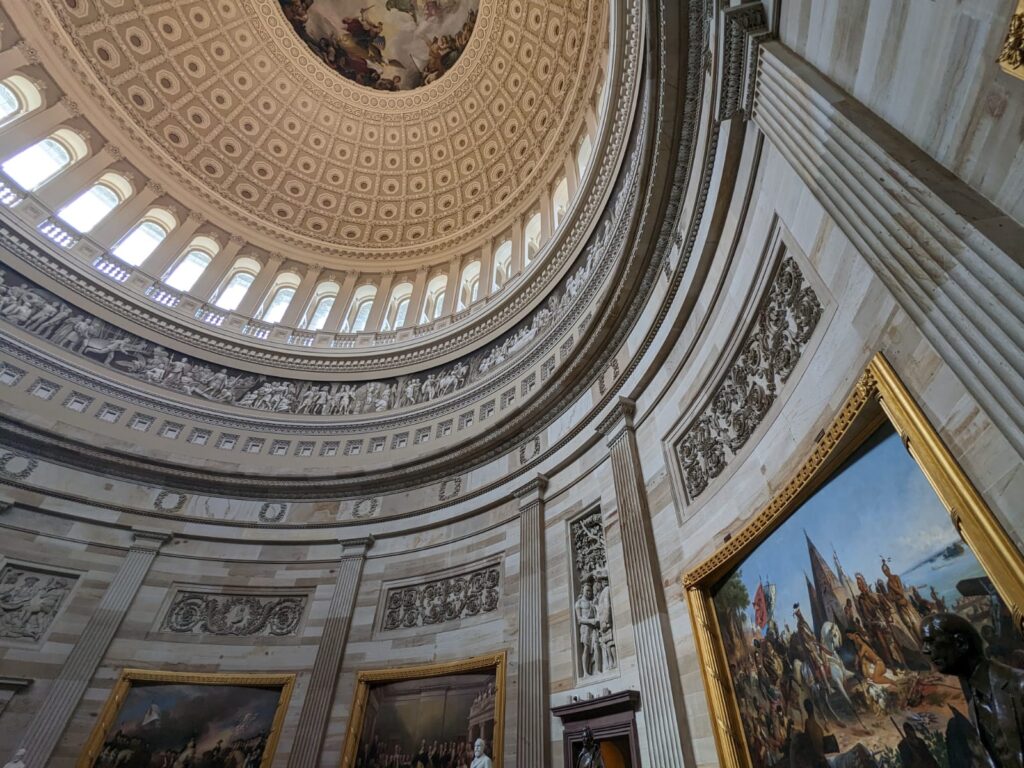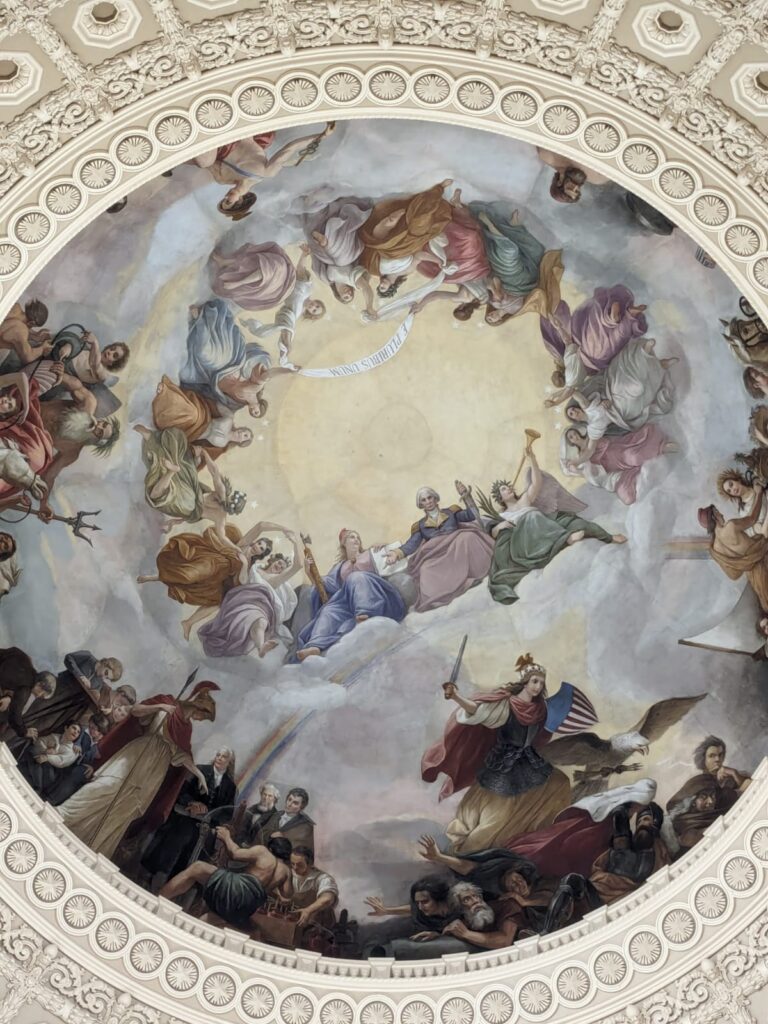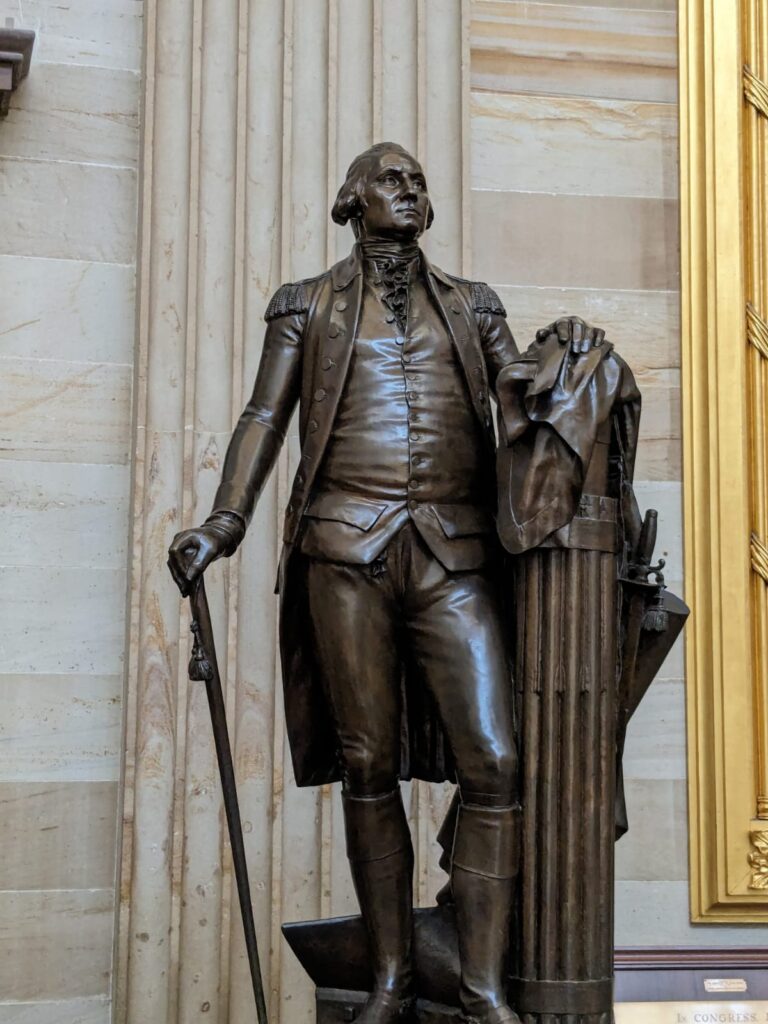In the annals of American history, few structures stand as resolute symbols of democracy, governance, and national identity as the United States Capitol. This comprehensive exploration aims to dissect the construction history, architectural evolution, and enduring significance of this iconic edifice that graces the heart of the nation’s capital.

Inception and Early Vision: A Monumental Aspiration Takes Root
The roots of the United States Capitol’s construction delve deep into the fertile soil of early American ideals, cultivated in the visionary minds of the nation’s founding fathers. These stalwart leaders, architects of a fledgling republic, harbored an ambitious vision — to erect a grand edifice that would stand as the very epicenter of their democratic experiment. This vision wasn’t merely a physical structure; it was a profound testament to the enduring ideals of liberty, self-governance, and the pursuit of a collective American destiny.
As the newly formed United States sought to establish its identity, the need for a distinctive seat of government became apparent. The founding fathers envisaged more than bricks and mortar; they aspired to construct a symbol that would resonate through the ages, representing the fledgling nation’s commitment to democratic principles and governance. This lofty vision took its initial steps toward fruition in the late 18th century, as discussions surrounding the creation of a permanent home for the federal government gained momentum.
To bring this grand vision into reality, a design competition was initiated, attracting the attention of brilliant minds from far and wide. Among the visionary participants, Dr. William Thornton emerged as the triumphant winner, his design laying the essential groundwork for the architectural marvel that would eventually grace the landscape of the burgeoning nation’s capital. Thornton’s blueprint not only captured the aesthetic aspirations of the founding fathers but also encapsulated the functional requirements of a seat of government that would serve the evolving needs of the United States.
This period of inception and early planning marked a pivotal chapter in the Capitol’s history, as the dreams and aspirations of the nation’s pioneers were translated into tangible plans for a structure that would transcend its physical form. The construction of the United States Capitol was more than an engineering feat; it was an embodiment of the democratic spirit that animated the hearts and minds of early American leaders. Little did they know that their monumental aspirations, sown like seeds in the fertile soil of ambition, would grow into a symbol that continues to echo the ideals of liberty and self-governance for generations to come.
Construction Commences: The Laying of the Cornerstone
In the nascent years of the republic, the realization of the grand vision for the United States Capitol began to take tangible form as construction unfolded as an ambitious undertaking. The seminal moment arrived with great ceremony and historical significance when, in 1793, President George Washington himself presided over the symbolic laying of the cornerstone. This ceremonial act marked not only the inception of a physical structure but also the birth of a monument destined to embody the very essence of American governance.
The laying of the cornerstone was a pivotal event, signaling the commencement of a construction journey that would shape the architectural and historical landscape of the burgeoning nation. President Washington’s participation in this ceremony underscored the profound importance attached to the Capitol as a symbol of the young republic’s commitment to democratic principles and the establishment of a central seat of government.
However, the initial stages of construction were not without their formidable challenges. The ambitious undertaking faced hurdles ranging from financial constraints to labor disputes, threatening to derail the nascent project. Despite these adversities, the resilience of purpose prevailed. The vision of the founding fathers and the collective determination to forge a tangible expression of American governance prevailed over obstacles, ensuring that the Capitol’s construction remained firmly on its course.
The laying of the cornerstone, with its symbolic weight and ceremonial significance, set the tone for the construction of the Capitol as a monumental enterprise infused with the ideals of democracy and the commitment to creating a physical space that would endure as a testament to the nation’s governance. From this momentous act in 1793, the United States Capitol began its journey as more than a mere building; it became a living embodiment of the republic’s dedication to a government of the people, by the people, and for the people.
Architectural Evolution: From Neoclassical Ambitions to the Dome’s Grandeur
The Capitol’s architectural journey stands as a testament to the dynamic evolution of America’s identity, mirroring the shifting sands of history and the aspirations of a burgeoning nation. Dr. William Thornton’s Neoclassical design, initially envisioned, set the stage for a monumental journey that would see successive architects leave an indelible mark on the Capitol’s aesthetic.
As the initial blueprint by Thornton laid the foundation, the Capitol’s architectural narrative was enriched by the contributions of subsequent visionaries, each leaving their unique imprint on the evolving structure. The revered Benjamin Latrobe and Charles Bulfinch, in particular, wielded their influence by introducing wings and refining the aesthetic, instilling a sense of grandeur and balance to the burgeoning complex.
However, it was the collaboration of Thomas U. Walter and August Schoenborn that ushered in a new era of architectural brilliance, forever altering the Capitol’s skyline. Their crowning achievement was the addition of the iconic dome, a masterstroke that transformed the Capitol into a beacon of architectural splendor. This majestic dome, inspired by neoclassical principles, became the crowning jewel of the Capitol, symbolizing the nation’s soaring aspirations and embracing a visual language that resonated with the democratic ideals enshrined within.
Amidst the dome’s grandeur lies a notable artistic gem that further enriches the Capitol’s narrative—the fresco inside the Rotunda. The apotheosis of this architectural marvel is the work of Constantino Brumidi, an Italian artist renowned for his mastery of fresco painting. His magnum opus, titled “The Apotheosis of Washington,” adorns the interior of the dome, depicting George Washington ascending to the heavens surrounded by an allegorical assembly of freedom, victory, and the thirteen original states.
Brumidi’s fresco, a celestial masterpiece, seamlessly integrates with the architectural vision of the Capitol, harmonizing art and structure in a symbiotic dance. The Rotunda, with its awe-inspiring dome and fresco, stands as a visual testament to the Capitol’s architectural evolution, encapsulating not only the nation’s changing identity but also its commitment to artistic expression that transcends time.
In the embrace of the Capitol’s architectural evolution, from Neoclassical origins to the grandeur of the iconic dome, the structure becomes not just a physical seat of governance but a living testament to the nation’s continual pursuit of excellence, democracy, and the enduring marriage of form and function.
Civil War Challenges and the Symbolic Dome Restoration
The United States Capitol, an enduring witness to the unfolding pages of American history, stood as a stoic sentinel during the tumultuous years of the Civil War. Serving as a poignant backdrop to pivotal moments in the nation’s narrative, the Capitol bore witness to the fervor of conflict, the echoes of impassioned speeches, and the indomitable spirit of a country grappling with its own identity.
As the Civil War raged on, the Capitol’s dome, once a symbol of democratic aspirations, took on new significance. It became a potent symbol of national unity and resilience, an architectural testament to the endurance of democratic ideals even in the face of unprecedented internal strife. The very dome that had witnessed the laying of the cornerstone and the birth of the republic now stood as a silent witness to a nation torn asunder, its copper-clad exterior reflecting the scars of a divided land.
In the wake of the conflict, the visionary hand of architect Thomas U. Walter and the artistic genius of Thomas Crawford emerged as beacons of hope amid the somber aftermath. Recognizing the profound symbolic importance of the Capitol’s dome, these architects embarked on a monumental task – the restoration of a structure that had weathered not only the physical tolls of time but also the symbolic weight of a nation at war with itself.



The restoration efforts, executed with meticulous care and unwavering commitment, aimed not just at repairing the dome but at reinvigorating its symbolic significance. The Capitol’s dome, gleaming with a fresh layer of gleaming copper, emerged as a phoenix rising from the ashes – a resolute symbol of hope, reconciliation, and the enduring endurance of democratic principles.
Thomas U. Walter’s vision was not merely to reconstruct; it was to revitalize and reaffirm the Capitol’s place as a beacon of democratic endurance. The iconic dome, once tarnished by the tempest of war, now glistened anew, reflecting not only sunlight but the resilience of a nation determined to heal and move forward.
Thomas Crawford’s artistic contributions were equally transformative, with his Freedom Statue crowning the restored dome, casting its protective gaze over the nation. This allegorical figure, embodying the essence of liberty and unity, became an integral part of the Capitol’s narrative, immortalized in bronze as a reminder of the enduring strength found in unity and the indomitable spirit of a democratic people.
The symbolic dome restoration of the United States Capitol, amidst the challenges and scars of the Civil War, stands as a testament to the nation’s ability to mend its wounds and emerge stronger. It embodies the resilience of democratic ideals, echoing through the ages as a testament to the enduring spirit of a nation that weathered the storm and emerged united under the gleaming dome of liberty.
Expansion and Modernization: The Capitol in the 20th Century
The dawn of the 20th century ushered in an era of dynamic change and progress for the United States Capitol, as the growing needs of the legislative branch necessitated significant expansions. Architects Cass Gilbert and George White emerged as key figures in this transformative phase, each contributing their unique vision to seamlessly integrate modern functionality with the historic grandeur of the Capitol.
The ambitious expansion efforts manifested in the form of the East and West Fronts, designed with a meticulous blend of architectural prowess and aesthetic sensitivity. Cass Gilbert, renowned for his architectural virtuosity, lent his expertise to the design of the East Front. Drawing inspiration from Classical Revival principles, Gilbert’s vision aimed not only to expand the Capitol physically but also to enrich its visual language, paying homage to the classical heritage that underpinned the nation’s democratic ideals.
On the opposite side, George White’s design of the West Front embraced the Beaux-Arts aesthetics, a style celebrated for its ornate detailing and harmonious proportions. This architectural expression complemented Gilbert’s work on the East Front, creating a cohesive symphony of design that bridged the gap between tradition and the demands of a modernizing nation.
The seamless integration of these expansions with the historic structure speaks to the architects’ skillful ability to navigate the delicate balance between preservation and progress. The Capitol, now expanded and modernized, retained its timeless elegance while embracing the pragmatic needs of a burgeoning legislative body.
The 20th-century Capitol became a dynamic space, embodying the spirit of a nation that was not only grounded in its historical roots but also responsive to the demands of an evolving democracy. The marriage of tradition with modern functionality was not merely an architectural feat; it was a symbolic gesture affirming the Capitol’s adaptability, resilience, and enduring role as the epicenter of American governance.
As the United States Capitol entered the 20th century, it stood as more than a physical edifice; it represented an ever-evolving testament to the democratic experiment. The East and West Fronts, with their Classical Revival and Beaux-Arts influences, became architectural milestones, contributing to the Capitol’s narrative as a living symbol of continuity and adaptability in the face of a changing world.
Capitol Symbolism and Enduring Significance
Beyond the marble façades and majestic domes, the United States Capitol transcends its architectural magnificence to stand as a living symbol of the profound American democratic experiment. Its hallowed halls resonate with the echoes of statesmen, its chambers bear witness to the intricate dance of the legislative process, and its iconic dome, with copper-clad resilience, serves as a silent sentinel over the nation’s relentless pursuits of liberty and justice.
The Capitol is more than an architectural marvel; it is a living testament to the principles that form the bedrock of the American experiment. Every inch of its storied corridors and chambers bears witness to the unfolding narrative of a nation grappling with its identity, facing challenges, celebrating triumphs, and continually evolving alongside the timeless ideals it represents.
The heartbeat of democracy reverberates within the Capitol’s walls. Its halls, adorned with the portraits and statues of visionary leaders, embody the spirit of civic duty and the collective pursuit of a more perfect union. The intricate symbolism woven into the Capitol’s design, from the frescoes in the Rotunda to the statues that line the National Statuary Hall, serves as a visual chronicle of America’s journey—capturing its struggles, triumphs, and enduring commitment to the principles of freedom and self-governance.
The iconic dome, with its majestic presence, rises above the landscape as more than a structural marvel; it is a metaphorical crown, symbolizing the aspirations of a nation reaching ever skyward. Through eras of war and peace, the Capitol’s dome has stood unwavering—a beacon of hope, resilience, and the enduring pursuit of democratic ideals that transcend the passage of time.
As the Capitol encapsulates the nation’s history, it also mirrors the evolution of the ideals it represents. From the laying of the cornerstone in the early days of the republic to the symbolic dome restoration post-Civil War, and the expansions in the 20th century, each chapter of the Capitol’s history weaves into the broader narrative of a democratic nation striving to form a more perfect union.
In its enduring significance, the United States Capitol is more than a building; it is a sanctuary of democracy, a living archive of the nation’s journey. It invites reflection, contemplation, and a recognition that, within its walls, the democratic experiment persists—a constant reminder that the ideals of liberty, justice, and the pursuit of happiness are not static concepts but living principles that shape the destiny of a nation. As we traverse the corridors of time within the hallowed halls of the United States Capitol, we witness not just the evolution of an architectural marvel but a testament to the endurance of democratic ideals. The Capitol’s construction history and profound significance serve as a perpetual reminder that, in the heart of the republic, a physical embodiment of democracy stands resilient, beckoning citizens and leaders alike to continue the ongoing narrative of liberty, governance, and the pursuit of a more perfect union.






